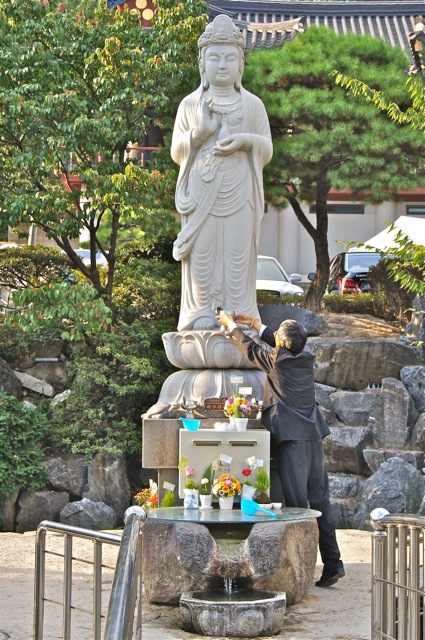
By the first century BCE, a major split developed between earlier Buddhist teachings, called Theravada (‘Teaching of the Elders’), and a newer form, called Mahayana (‘Greater Vehicle’). Theravada stresses strict adherence to the teachings of the historical Buddha. Followers of this school believe that one achieves nirvana by becoming a monk and practicing meditation and austerity. By contrast, the Mahayana school of Buddhism seeks to appeal to a wider audience, teaching that all beings have the potential for enlightenment.
After this time, images of the Buddha began to emerge, along with other deities, the most influential and important of which were the Bodhisattva or ‘enlightened beings.’ They renounce Buddhahood out of compassion for all beings, and devote themselves to the salvation of the suffering world.
Avalokitesvara, the Bodhisattva of Compassion, has enjoyed more popularity than any other Buddhist figure. Legends claim that he was born from a ray of light emanating from the right eye of Amitabha, the Buddha of ‘Infinite Light,’ residing in the Western Paradise. He is known by various names: Chenrezig (Tibetan), Guanyin (Chinese), and Kannon (Japanese). In Tibet, this Bodhisattva has been identified with the lineage of Dalai Lamas.
The gender of Avalokitesvara varies according to the spiritual needs of different cultures. Originally male in the pantheon of mainland Asia, over time this deity incorporated other feminine forms, and in East Asia is usually considered female. She is worshipped not only as a compassionate saviour, but also as a mother figure and a bestower of children. The lotus, symbol of spiritual purity, and a water vessel, containing the nectar of compassion, are this Bodhisattva attributes.
Generally speaking, Bodhisattva images can be distinguished from the Buddha by their more dynamic than meditative postures. They are represented with royal garments, ornaments, and crowns, symbolic of spiritual wealth and power.


